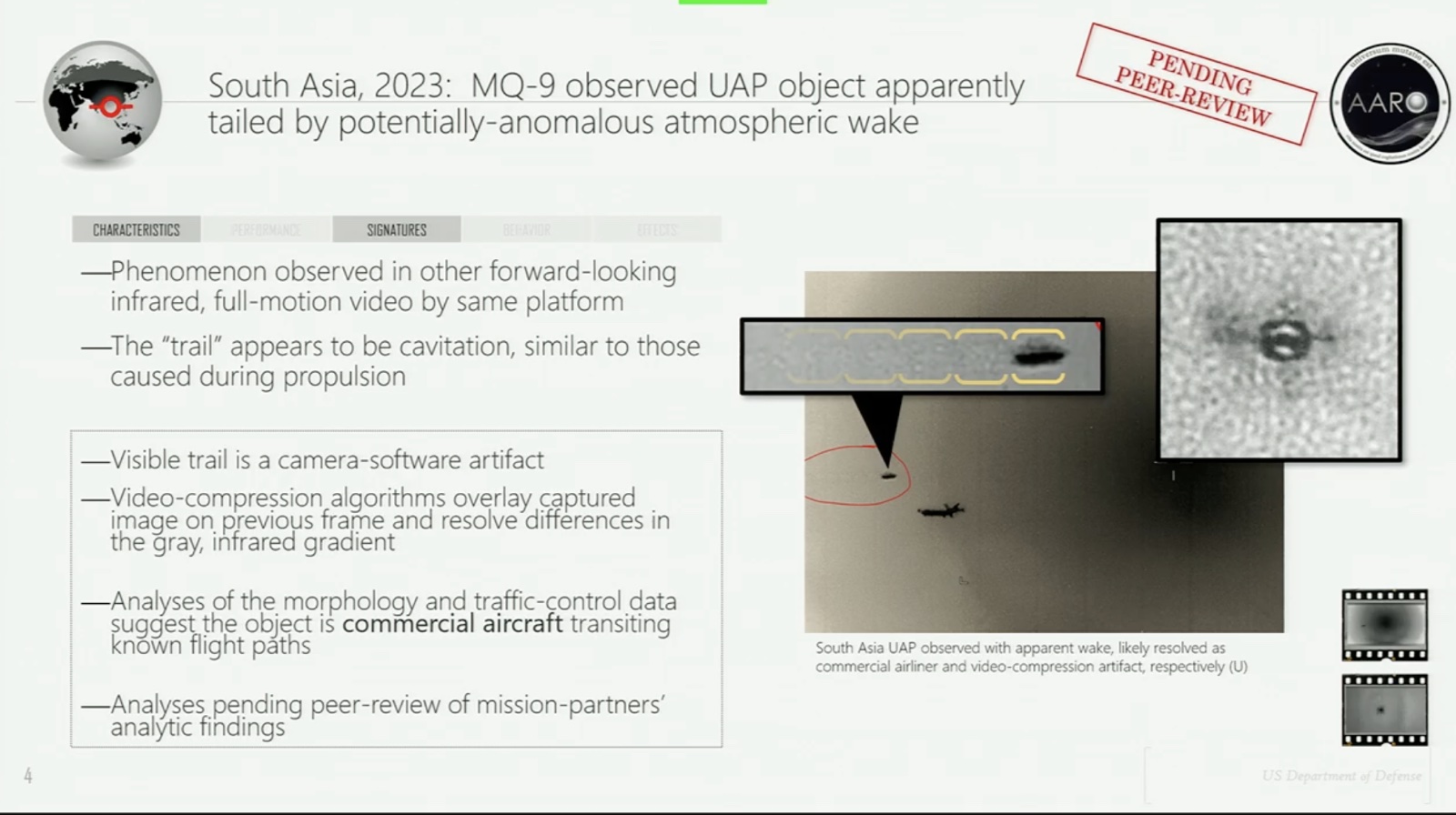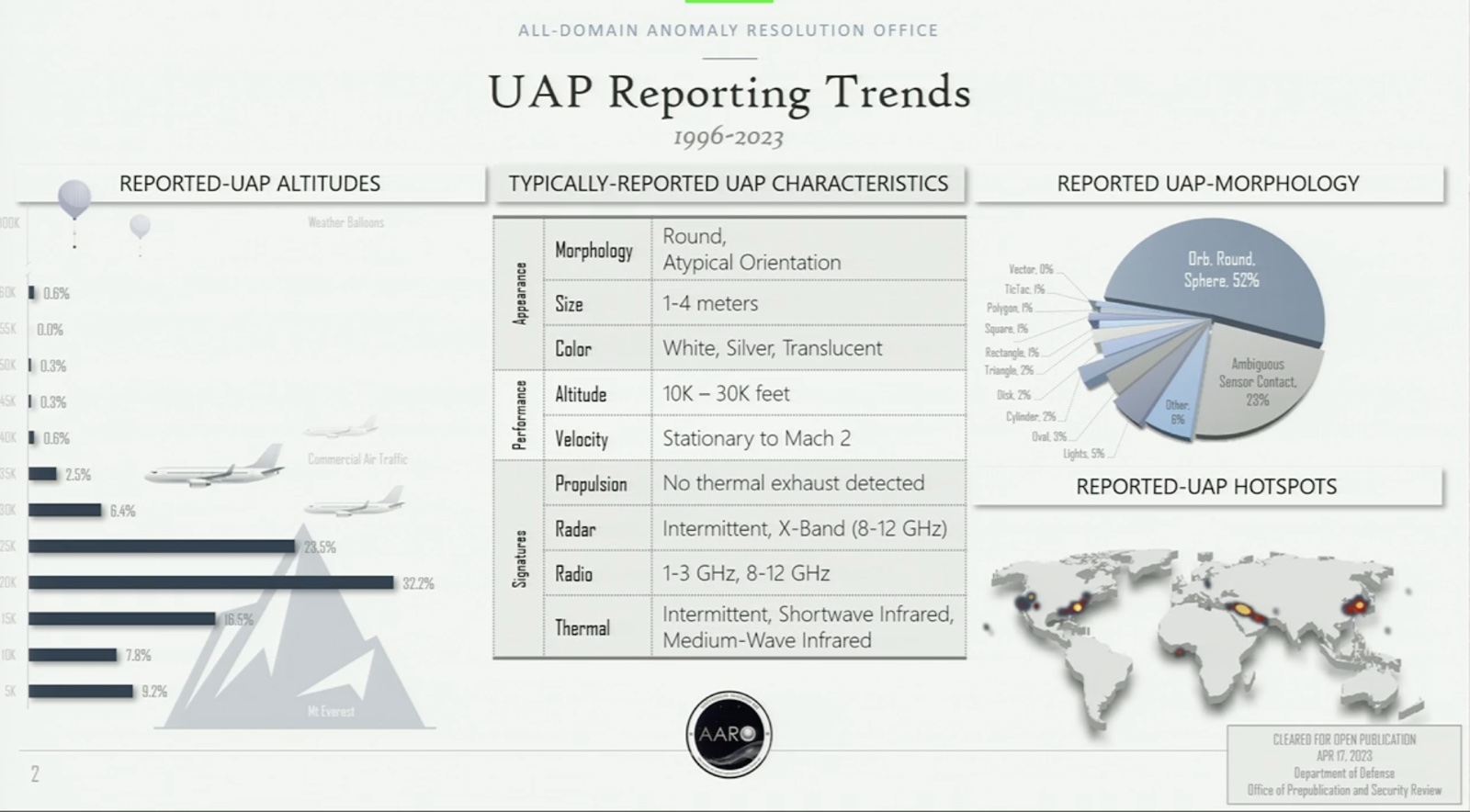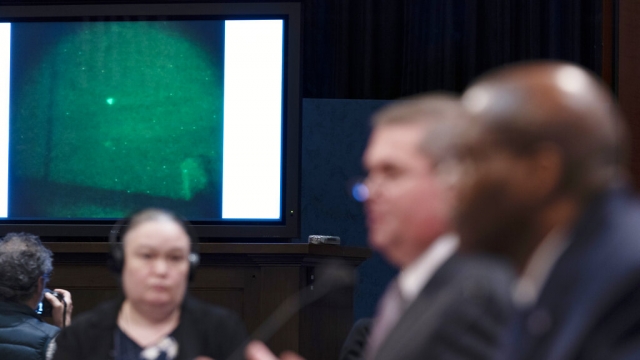Are we alone? That's the question lawmakers on Capitol Hill are tackling, which came with a blunt answer from the head of the newly formed division examining the decades-old alien mystery.
"I should also state clearly, for the record, that in our research ARRO (All-domain Anomaly Resolution Office) has found no credible evidence thus far of extraterrestrial activity, off-world technology or objects that defy the known laws of physics," said Dr. Sean M. Kirkpatrick, director of the division, in testimony.
The Senate Armed Services Subcommittee on Emerging Threats heard from Kirkpatrick as their only witness in the second-ever hearing on the phenomena in the last 50 years. The previous hearing happened just last May.
UAPs — or Unidentified Anomalous Phenomena, as the government now refers to UFOs — have been a subject of interest in recent years, especially with more reports of military sightings and surfacing video.
SEE MORE: NASA Launches UFO Study Despite 'Reputational Risk'
Last year, the Director of National Intelligence released an unclassified report on the objects which found there had been more than 500 sightings, mostly by "U.S. Navy and Air Force aviators," with more than 150 showing "unusual flight characteristics or performance capabilities and requir[ing] further analysis."
At the bipartisan hearing, Kirkpatrick testified to that number increasing to 650 cases, half of which he said are "of anomalous, interesting value" which are going through a scientific review process examining available data.
Showing video of two examples, Kirkpatrick outlined the scientific process for making determinations of what UAPs are. With one video, he explained it would be "virtually impossible to fully identify that" because all they had was the single video, while in the second, he explained how they determined from the video and other available data it was an aircraft.

One of the hiccups in making those identifications is unretained data. Kirkpatrick explained to lawmakers the division is working with joint staff to establish reporting requirements for sensors and other data's retention and delivery. That guidance could go out as soon as this week.
Just last week, Maj. Gen. John Olson, mobilization assistant to the chief of space operations with Space Force, said these events "occurred globally." Kirkpatrick echoed that in the hearing, displaying a map of activity where the majority of their data is collected.

"What you'll notice is that there is a heavy, what we call, collection bias, both in altitude and in geographic location," he said. "That's where all of our sensors exist. That's where our training ranges are. That's where operational ranges are. That's where all of our platforms are."
Kirkpatrick also emphasized "a very small percentage of UAP reports display signatures that could reasonably be described as novels."
So what could these UAPs be?
"There are emerging capabilities out there that in many instances, Russia and China, — well, China in particular — are on par or ahead of us in some areas," Kirkpatrick said. "The adversary is not waiting. They are advancing, and they're advancing quickly. They are less risk averse at technical advancement than we are. They are just willing to try things and see if it works. Are there capabilities that couldn't be employed against us in both an ISR (Intelligence, Surveillance and Reconnaissance) and a weapons fashion? Absolutely. Do I have evidence that they're doing it in these cases? No, but I have concerning indicators."
Kirkpatrick explained to lawmakers his ultimate goal is to shut down the office by identifying all unidentified objects and putting their handling in the right hands.
Trending stories at Scrippsnews.com



